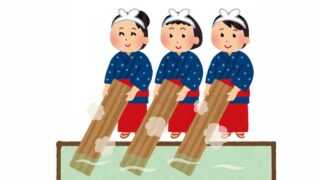The Cultural Background of Fried Rice
Fried rice, a simple yet versatile dish, has been cherished by many cultures throughout history. Its origins can be traced back to the Chinese city of Yangzhou, where it is believed to have developed during the Qing Dynasty, particularly in the late 17th to early 18th centuries.
Yangzhou Fried Rice
Also known as “Yangzhou Special Fried Rice,” this dish emerged during a period of economic growth and culinary innovation in China. The flourishing food culture of this era led to the creation of many new dishes, including the beloved fried rice we know today.
It’s estimated that fried rice established its recognizable form at least 300 to 400 years ago, between the 17th and 18th centuries.
The Evolution of Fried Rice in Japan
While influenced by China, fried rice in Japan has followed its own unique path of evolution.
Meiji Period (1868-1912)
Fried rice began to gain popularity in Japan during this time, coinciding with the Meiji Restoration. As Japan embraced Western culture, it also saw an influx of Chinese immigrants who introduced their cuisine, including fried rice, to Japanese food culture.
Taisho (1912-1926) and Showa (1926-1989) Periods
During these eras, fried rice continued to grow in popularity, and uniquely Japanese versions began to emerge. Different regions developed their own styles, with soy sauce-based seasonings becoming particularly popular as they suited Japanese tastes.
Post-World War II
As Japan’s economy rapidly grew after the war, fried rice became a widely enjoyed home-cooked dish. Its simplicity, nutritional value, and ability to make use of leftover rice made it a beloved meal in many households. It also became a staple menu item in ramen shops and Chinese restaurants.
“Chahan” vs. “Yakimeshi”
Interestingly, there are two common terms for fried rice in Japan:
- “Chahan” (炒飯): Derived from the Chinese pronunciation
- “Yakimeshi”: A more Japanese way of referring to the same dish
Both terms refer to rice stir-fried in oil, seasoned with soy sauce or salt, and mixed with ingredients like vegetables, meat, and eggs. The choice of term often depends on regional preferences.
Evidence Supporting the Chinese Origin Theory
The primary evidence supporting the Chinese origin of fried rice includes:
- The etymology of “chahan,” derived from the Chinese word “chǎofàn”
- The existence of various styles of fried rice across different regions of China
- References to fried rice in Chinese literature dating back hundreds of years
Considering the Japanese Origin Theory
Some argue for a Japanese origin of fried rice, based on:
- The distinct styles and flavors of fried rice found in Japan
- The unique evolution of fried rice within Japanese food culture
Conclusion
The debate surrounding the origins of fried rice is complex and multifaceted. While it’s likely that the dish originated in China, its evolution and development in Japan have been distinctly Japanese. This culinary journey highlights the interconnectedness of food cultures and the way dishes can transform as they travel across borders.
Regardless of its exact origins, fried rice has become a beloved dish in many cuisines around the world. Its adaptability and delicious simplicity continue to make it a favorite among food lovers everywhere.





















